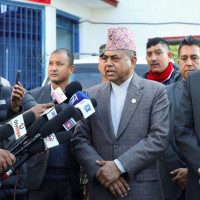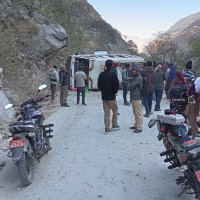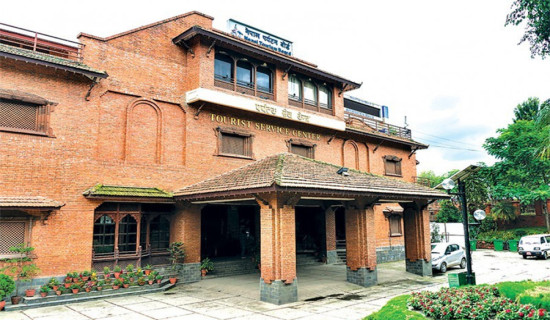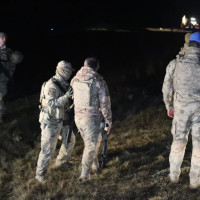- Wednesday, 24 December 2025
Cultural Diplomacy For Peace
Though the 21st century has not yet witnessed a world war, it has seen a relentless series of conflicts worldwide. History has documented the heavy costs of war, yet humans continue to rely on bombs, missiles, sanctions, and territorial grabs to maintain hegemony. War has never been anticipated by the masses, even as leaders exercise their powers in its name, promising justice to the people. However, the painful reality is that war often shifts people from one catastrophe to another. While missiles may alter the power dynamics of a nation, they rarely address the root causes of war—underlying grievances, mistrust, ignorance, and competing narratives of identity. From the unyielding siege of Gaza to the geopolitical tensions in Ukraine, humanity seems stuck in an endless cycle of proving Einstein’s theory of insanity: repeating the same flawed actions with the use of hard power, expecting a better world. Nepal, with its focus on diplomacy rather than dominance, exemplifies how cultural soft power is more effective in saving humanity.
Cultural diplomacy, which encompasses the use of art, language, music, cuisine, sports, and other creative forms to enhance a nation’s global image, aims to garner international support for its policies. It is a subtle form of diplomacy that may not yield visible results in the short term, but it fosters long-lasting peace and harmony. Cultural diplomacy helps nations achieve their goals through attraction, not coercion or financial incentives. It is track-two diplomacy, where non-state actors play a significant role in addressing the underlying causes of conflict and fostering peaceful relations among nations.
Cultural diplomacy creates an environment where diverse cultural identities are celebrated. Culture is an essential part of a nation’s and an individual’s identity, influencing interactions in all areas. In international relations, it plays a crucial role in projecting a favourable image of a nation, enabling it to pursue its political aims. Cultural diplomacy promotes cultural diversity and heritage through global intercultural dialogue, advancing justice, equality, and interdependence while contributing to global peace and stability.
Cultural diplomacy has played an active role in world politics since the 16th century. The United States, for instance, utilised cultural diplomacy extensively during the Great War and the Cold War through films, exchange programs, and music. After the 9/11 attacks, the U.S. State Department showcased photographs by Joel Meyerowitz of a ravaged city, invoking solidarity with the U.S. and justifying its actions in the aftermath. Great Britain has maintained global peace through language, lifestyle, and other aspects, making it a cultural superpower. Qatar’s hosting of the 2022 World Cup and its "Qatar National Vision 2030" were also driven by cultural diplomacy goals. Institutions like the Yunus Emre Institute, Alliance Française, British Council, and Goethe-Institute demonstrate how cultural diplomacy serves as a bridge to understand the essence of the nations they represent.
Nepal, strategically located between India and China, relies on cultural diplomacy as a key tool for peaceful coexistence between these two economic giants.
Culturally interdependent nations are better equipped to tackle issues like climate change, pandemics, and security concerns. Cultural diplomacy helps eliminate cultural misinterpretations and forges alliances, building a world where diversity is seen as a source of innovation, creativity, and inclusivity. Programs like the Erasmus Student Interaction Program in the European Union and the U.S. Fulbright Foreign Student Program create positive narratives about politically hostile nations, fostering empathy and reducing the perpetuation of violence. While such programs may not stop bombardments, they help nurture a deeper understanding and connection among citizens, even in countries at war.
Through partnerships, communication, and programs, cultural diplomacy resonates with local populations’ emotions. It is a form of storytelling where minds and hearts are connected through cultural exchanges, developing sincere connections on common ground while respecting culturally sensitive aspects. Even in societies where peace may be enforced through coercion, there remains the possibility of renewed conflict. Israeli Prime Minister Benjamin Netanyahu’s statement about ending the Gaza war underscores the necessity of addressing the root causes of conflict. After the ceasefire with Lebanon, he stated that while he might agree to a ceasefire in Gaza, the war would not end until Hamas was eliminated. Such rivalries only intensify when cultural narratives are not used to address ideological battles. Vladimir Putin’s justification of the invasion of Ukraine as a cultural reclamation demonstrates the dual-edged nature of culture. Culture can either escalate conflict or serve as a tool for peacebuilding. The choice lies with its users.
In today’s complex world, with hybrid needs and ideologies, culture, when authentically portrayed, helps reveal both our similarities and differences, fostering broader cooperation. The spread of information—not propaganda—remains the only path to mutual cooperation. While hard power demonises opposing parties, culture humanises them, portraying them as individuals with shared human experiences. By promoting nonconventional diplomatic practices through state and non-state actors, we can move beyond rejection, disintegration, segregation, and isolation in societies torn by internal, ethnic, and religious conflicts. In societies with rich histories and cultures but torn apart by war, frozen conflicts, or dictatorships—such as the Balkans, Myanmar, or the Middle East—cultural diplomacy can be especially effective at both grassroots and mid-level decision-making.
Though often overlooked, cultural diplomacy can yield immense results in reconciling nations and fostering peace.
Nepal, with its diverse culture and peaceful coexistence between two ideologically opposed nations, has managed to safeguard its sovereignty for centuries by prioritising cultural connections over coercive tactics. Thus, in a world increasingly grappling with geopolitical conflicts, environmental challenges, and sociopolitical instability, cultural diplomacy should be pursued as a solution. It represents a nation in all its diversity and complexity, addressing even the most overlooked causes of conflict. The global scenario is becoming more intricate with the acceleration of globalisation, the rise of new technologies, and the influence of a powerful civil society. Cultural diplomacy is not confined to government actions—it extends through media, migration, intermarriage, tourism, and other forms of global connectivity. In this new era of interconnectedness, we, too, serve as representatives of cultural diplomacy. We must cultivate a mindset that transcends radical nationalist views and embraces the broader human understanding.
(The author is an officer at National Archives of Nepal)
















